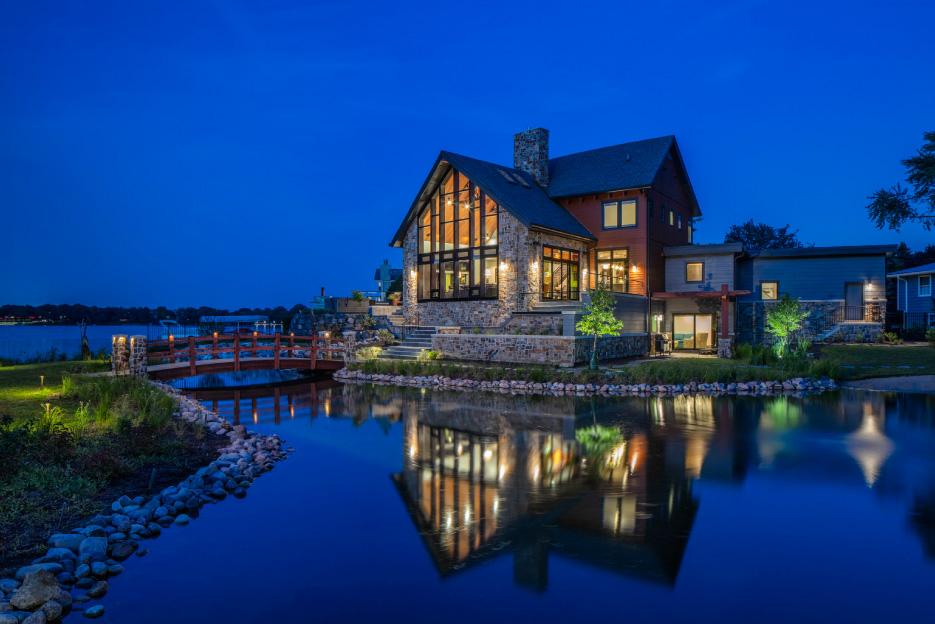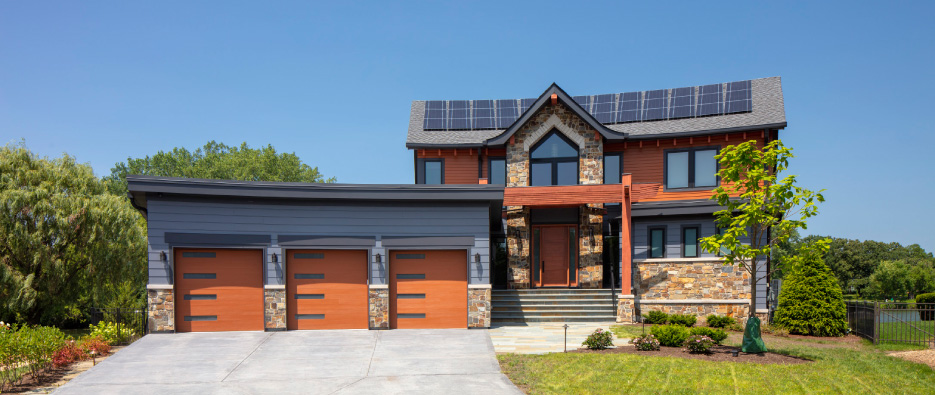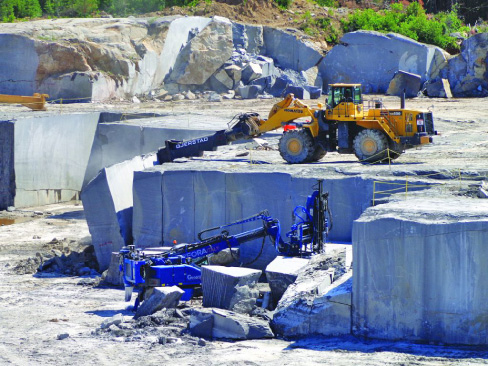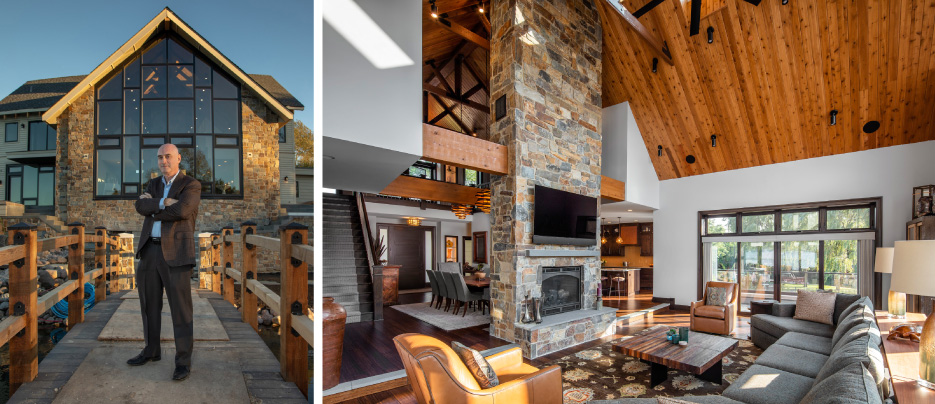Natural Stone: Mother Nature‘s Original Green Building Material
Megy Karydes
usenaturalstone.com
Architectural Photos Courtesy NextHaus Alliance; Quarry Photo Courtesy Coldspring
As climate change impacts communities throughout the country in the form of devastating fires, massive flooding and high winds, architects, designers, and environmentally conscious homeowners are paying even more attention to the building materials they source and use than ever before. Carbon reduction targets are part of those discussions and natural stone has a larger spot at the table. Increasingly, architects and designers are looking for products that meet sustainability standards to help them make both recommendations and decisions.
Architecture firm Kipnis Architecture + Planning in Evanston, Illinois, specializes in designing and building “high design/low carbon” and high-performance luxury homes with sustainability in mind. Nathan Kipnis, FAIA, LEED AP BD+C, founder and principal of Kipnis Architecture + Planning, often incorporates natural stone for a number of reasons and one of them is because he seeks to create homes that are resilient and can handle both natural and man-made events.
 |
|
Above and Below: Natural Thin Lite Veneer from Glacier Stone Supply. |
 |
Natural Stone Versus Manmade Materials
 |
|
Locally sourced: Coldspring’s Mesabi Black quarry |
Ultimately, architects and designers must understand what a buyer wants in using one material over the other to meet their needs. Kathy Spanier, Director of Marketing for Coldspring considers it part of their role to educate architects, designers and other clients on the properties and performance of each material to help guide their decision. That includes the differences between choosing quartzite and quartz.
“Many quartz or engineered stone products are marketed and promoted as natural stone and it creates confusion for the buyer,” Spanier admits. “Natural stone is a naturally occurring material made out of various minerals in Mother Nature’s pallet. Manmade quartz is a mixture of crushed quartz mixed with a resin and other additives that are processed and cured into a solid form or slab.”
When making a decision whether to use manmade vs natural materials, Spanier recommends her clients consider what is important to them and/or their client on the project.
With no additives, natural stone is a chemical free material and has very low embodied carbon. When making material selections, it is important to make sure you consider the chemicals, ingredients and carbon footprint of the material.
Another thing architects and designers are requesting, because clients are demanding it, is transparency. They want to know where the material being used in their projects coming from and in what conditions those materials are being sourced.
“When vetting material, transparency programs such as the Declare label are a great way to ensure you understand all the ingredients in the product you are using,” Spanier adds. “Think of it like a nutrition label for your materials.”
Similar to a label you’d see on a cereal box, a Declare label shows a buyer a breakdown of the product. Details include where a product comes from, what it’s made of and where it goes at the end of its life. For example, a Declare label for natural stone would show just one ingredient (natural stone), and show that at the end of its life, stone can be salvaged, recycled, or reused in its entirety. A Declare label for a manmade material such as engineered quartz on the other hand would list components such as polyester resins, pigments, and other additives. It would also show that at the end of its life, engineered quartz goes to a landfill.
For those who want to ensure the sustainability and environmental performance of natural stone, the Natural Stone Sustainability Standard (ANSI/NSC 373) is a great resource.
“Some of the most common reasons the architect and design community choose to use natural stone are due to its durability and performance, aesthetics and certainly the fact that it is a natural product,” adds Spanier. “In architectural applications specifically, using natural stone from companies that have gone through the third party verified Sustainability Standard can help designers and owners meet their sustainability goals on projects as it contributes to both LEED v4 and Living Building Challenge material credits.”
 |
|
Alexander Kipnis, of Kipnis Architecture + Planning |
Why Using Natural Stone Matters
While many of the homes designed by Kipnis Architecture + Planning do incorporate natural stone, Kipnis reminds designers that where they source their stone is just as important as deciding which stone to use.
Stone that is locally quarried tends to fit in better with its surroundings, for example, not to mention it’s an eco-friendly option, since a significant percentage of any material’s embodied energy is from transportation.
“By using local stone, the embodied energy (and therefore carbon) involved with the transportation is greatly reduced, which is especially true for such a heavy building material,” says Kipnis.
Additionally, depending on the application and type of natural stone being specified and installed, it can last for 50 to 100 years or more, according to Spanier.
Natural stone is a non-toxic, environmentally-friendly material and no matter how you slice it, manmade materials just don’t live up to the task.
Megy Karydes is a Chicago-based writer. Her byline has appeared in national outlets like USA Today, Architectural Digest and National Geographic. Connect with her at MegyKarydes.com.